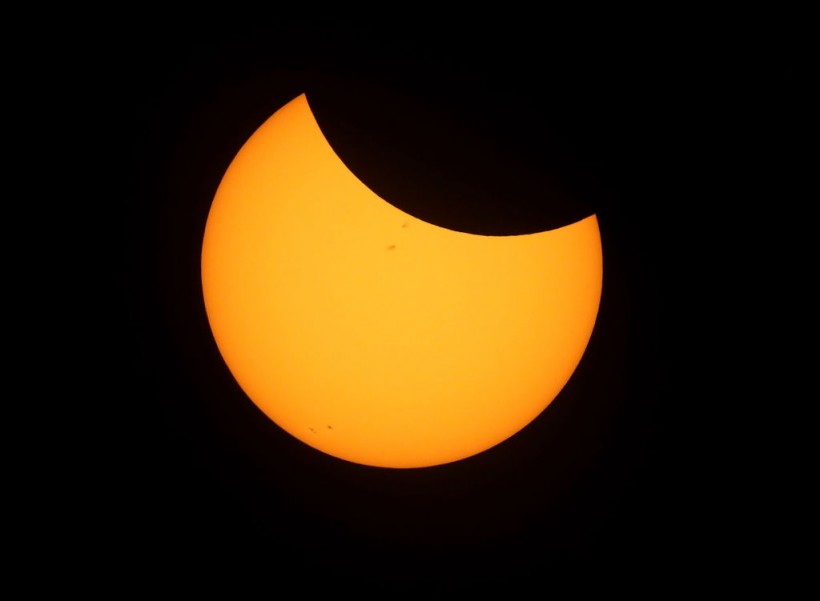The most number of eclipses that can occur in a year is seven, which happened in 1982, while the least is four. This year, the Sun, Moon, and Earth will align four times again, although that may not result in a total solar eclipse.
Instead, some parts of South America, Antarctica, Atlantic, and Pacific Oceans could witness a partial solar eclipse in April. Then in October, residents from western Asia and northeast Africa will get to see the second partial solar eclipse of the year. Meanwhile, two lunar eclipses are also set to happen this year, one in May and another in November.

A partial eclipse is seen from South Mike Sedar Park on August 21, 2017 in Casper, Wyoming.
Dates for Partial Solar Eclipses This 2022
The first partial solar eclipse, according to Time and Date, will begin at 1:45 PM EST (18:45 UTC) on April 30 and will reach its peak at 3:41 PM EST (20:41 UTC). Its last appearance will be seen at 5:37 PM EST (22:37 UTC). The eclipse will sweep across the Pacific region and move to southern South America.
Meanwhile, those who live in Europe, western Asia, and northeast Africa will get to see the second partial solar eclipse. Residents in Iceland can view it near sunrise, while people in western India can see it near sunset.
According to Sky and Telescope, those who wish to see the biggest "bite" of the partial solar eclipse can venture 1,500 miles (2,400 kilometers) east-northeast of Moscow in the West Siberian Plain, where 82% of it will be covered by the new Moon's shadow.
Meanwhile, Europe, the Middle East, western Asia, and northeast Africa have the best locations.
Dates for Total Lunar Eclipses This 2022
Although both solar eclipses are only partial, the Almanac said there would be two total lunar eclipses this year. The first one will be visible in North America, except to the northwestern areas, and the Moon will be at penumbra by 9:31 PM EDT on May 15 and will end at 2:52 AM EDT on May 16.
The second total solar eclipse will happen on November 8 and be visible from North America and set in the eastern region. The Moon will enter the penumbra at 3:01 AM EST and leave at 8:58 AM EST.
How Do Eclipses Happen?
As Almanac reported, there are two main types of eclipses that can be seen on Earth - solar and lunar eclipses. A solar eclipse happens when the Moon passes directly in front of the Sun, either partially or entirely blocking its light. However, they are not visible to all parts of the world and need special eyeglasses when viewing a solar eclipse.
Meanwhile, a lunar eclipse occurs when the full moon enters the shadow of Earth. When that happens, the Earth will cut off all of the reflected light of the Sun to the Moon. A lunar eclipse can be seen at all parts of the night side of Earth, although during a penumbral eclipse the Moon's illumination is dimmed slightly.
Not all eclipses are the same because they could be total, partial, annular, or penumbral eclipses. Sometimes, a transit could also happen when another cosmic body, such as another planet, passes between the Sun and Earth.
RELATED ARTICLE: Total Solar Eclipse 2021: Where and How to Watch the Only Phenomenon Live
Check out more news and information on Solar Eclipse in Science Times.










!['Cosmic Glitch' in Einstein's Theory of General Relativity Could Be Explained in This New Scientific Tweak [Study]](https://1721181113.rsc.cdn77.org/data/thumbs/full/53435/258/146/50/40/cosmic-glitch-in-einsteins-theory-of-general-relativity-could-be-explained-in-this-new-scientific-tweak-study.jpeg)



